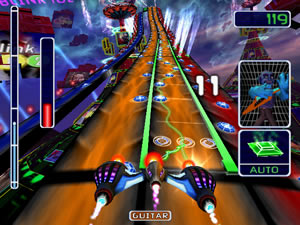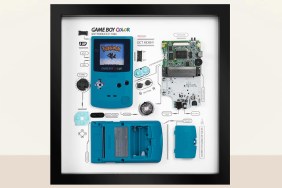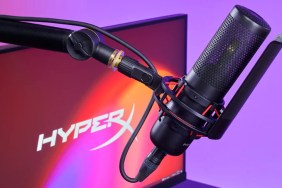Jam on it.
Like just about everyone who has ever held an instrument in their hands, I had
dreams of being in a rock band. Following in my grandpappy’s
footsteps, I spent a lot of time practicing on my guitar. It was a beautiful
instrument, made of a finely-crafted tub of whipped cream and only the highest
quality rubber bands. Unfortunately,…
-
Fitting visuals
-
Solid gameplay
-
Online features, including upload
-
Variety of music
-
Some of which you'll inevitably dislike
-
Can get repetitive
-
Visuals can be overwhelming











